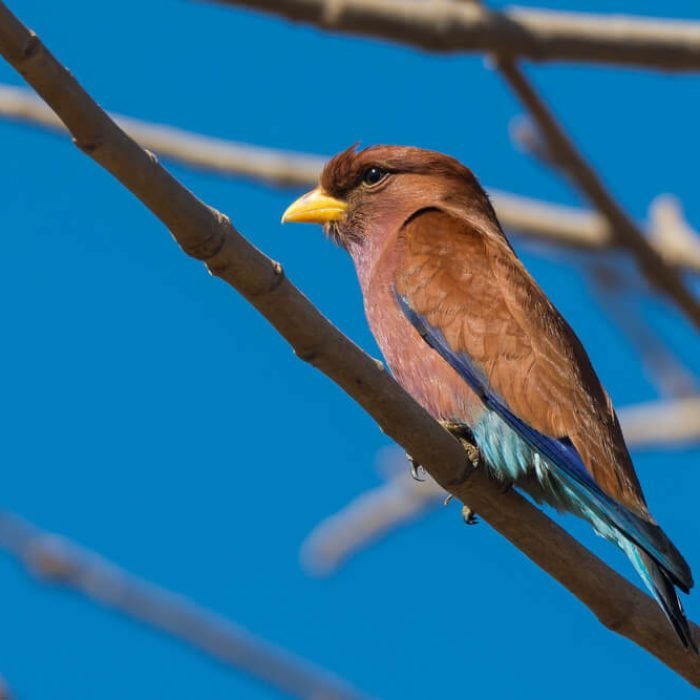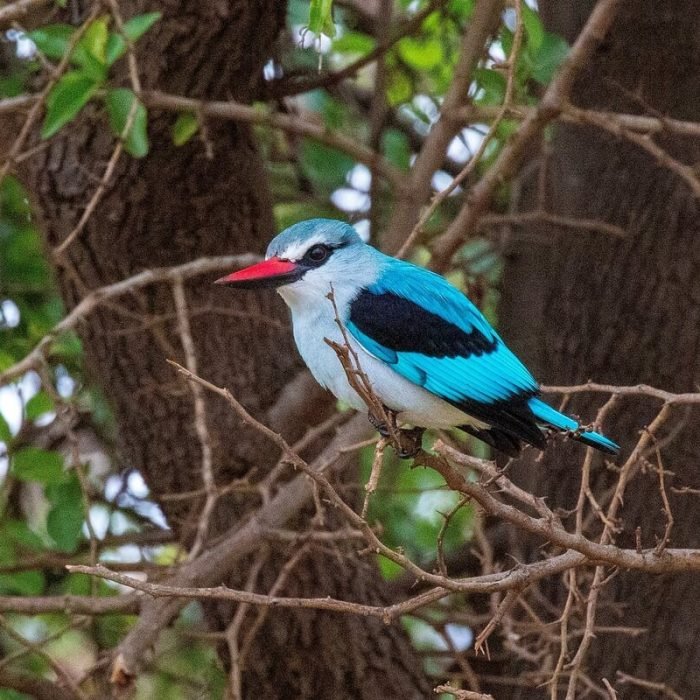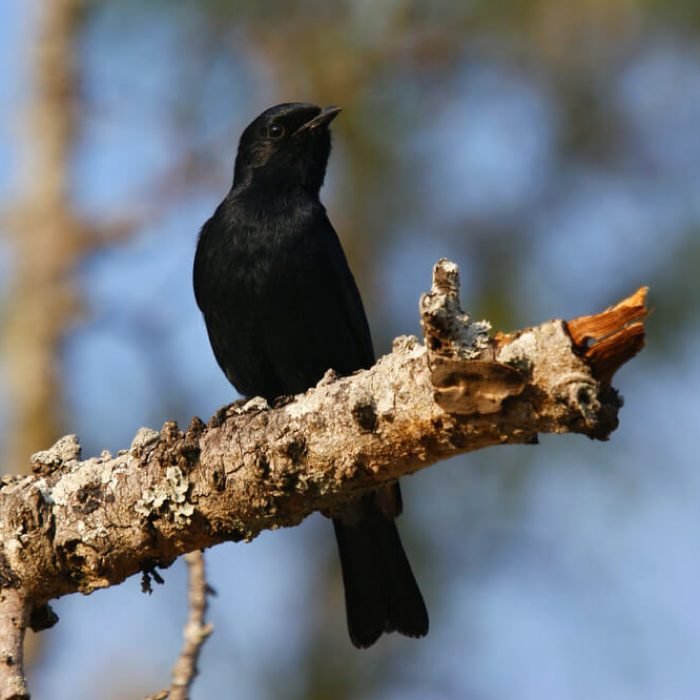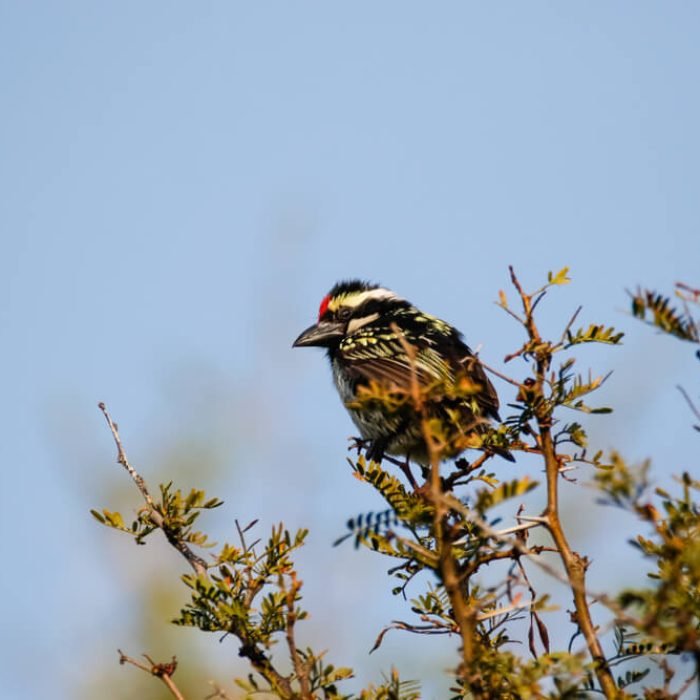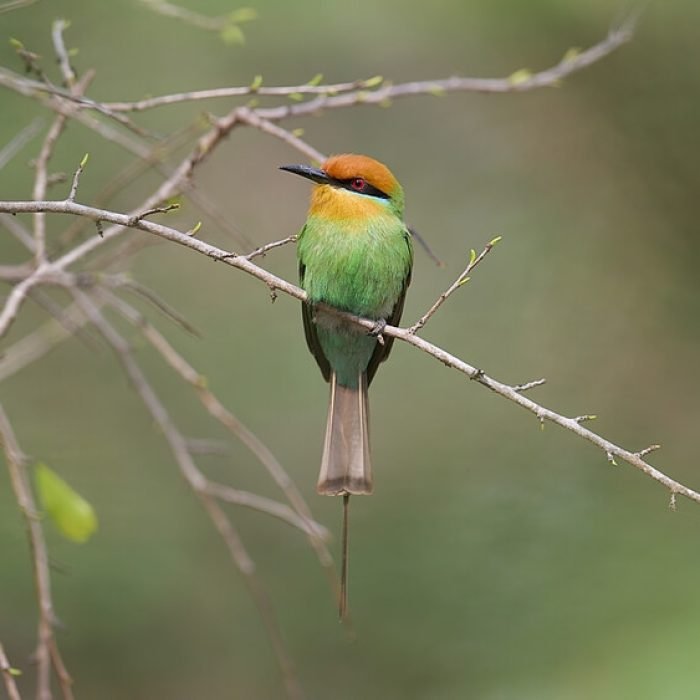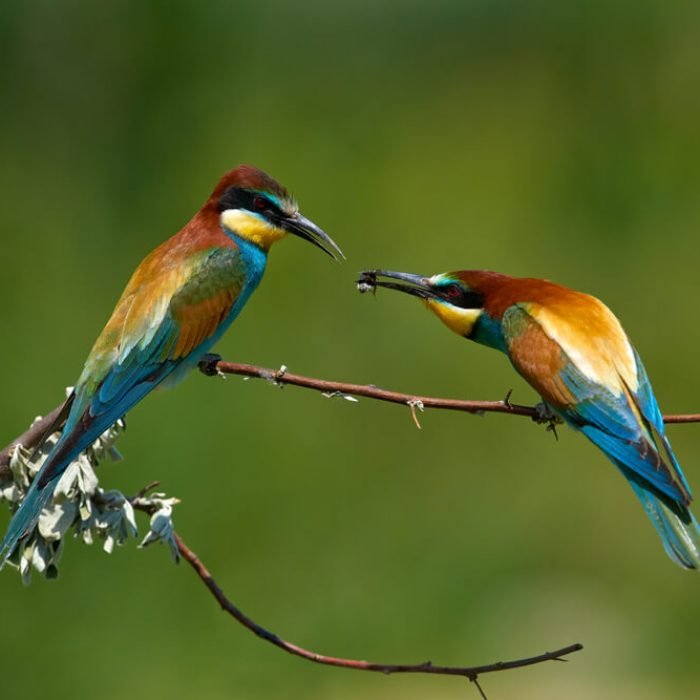Dark Capped Bulbul
( Pwele )
- Pycnonotus tricolor
- IUCN Status: Least Concern
- Trend: stable

General Information
The dark-capped bulbul (Pycnonotus tricolor) is a member of the bulbul family of passerine birds.
Description
The dark-capped bulbul is mostly greyish brown above and whitish brown below, with a distinctive dark head and pointy crest on top of the head. The back of the head merges into the brown of the back, and the chin is also blackish. The underparts are grey-brown apart from white around the vent (yellow in P. b. tricolor). It is about 18 cm in length, with a long tail. It has a dark brown head and upperparts. Sexes are similar in plumage.
Fun Facts
The dark capped bulbul makes a weird cal that sounds like, “doctor-quick doctor-quick be-quick be-quick”. In Zambia it is locally known as ‘Pwele’
Ecology and Behaviour
The dark capped bulbul is usually seen in pairs or small groups. It is a conspicuous bird, which tends to sit at the top of a bush. As with other bulbuls they are active and noisy birds. The flight is bouncing and woodpecker-like.
Diet
This species eats fruit, nectar, seeds and insects.
Reproduction
This species nests throughout the year in the moist tropics, elsewhere it is a more seasonal breeder with a peak in breeding coinciding with the onset of the rainy season. The nest is fairly rigid, thick-walled and cup-shaped. It is usually situated inside the leafy foliage of a small tree or shrub.
Two or three eggs are a typical clutch
Conservation
It is listed by the International Union for Conservation of Nature (IUCN) as a, ” Least Concern “.
Distribution and Habitat
It is a common resident breeder in much of Africa, and it has recently been found breeding in southern Spain at Tarifa. It is found in woodland, coastal bush, forest edges, riverine bush, montane scrub, and in mixed farming habitats. It is also found in exotic thickets, gardens, and parks.
Share:
- Kingdom: Animalia
- Phylum: Chordata
- Class: Aves
- Order: Passeriformes
- Family: Pycnonotidae
- Genus: Pycnonotus

